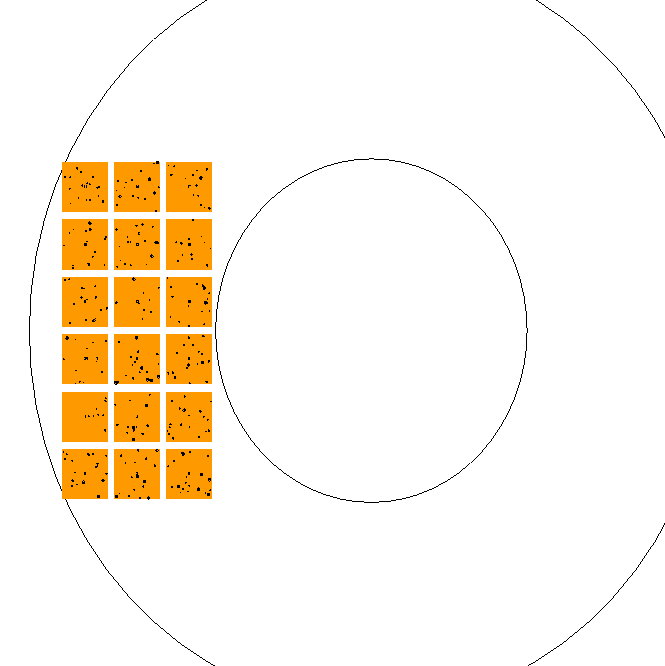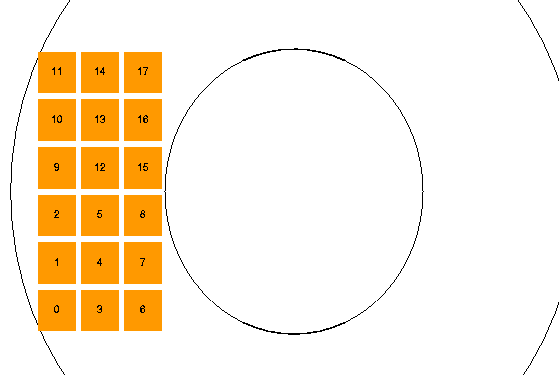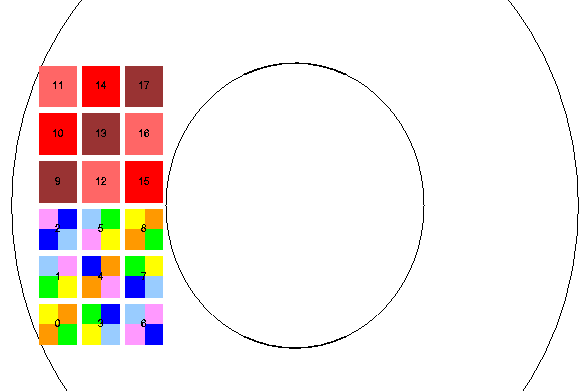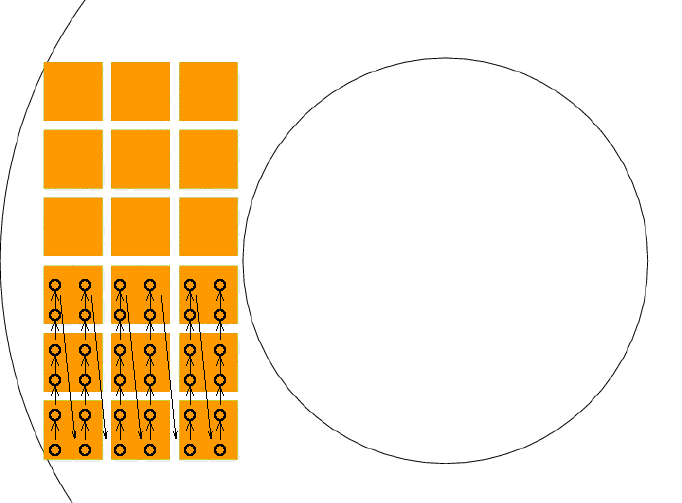
I am gradually increasing the realism of tests using my photometric simulator. This week, I wanted to look at
The chip-to-chip offsets are only one factor in the overall flatfielding problem. I described in an earlier document some very simple tests, but I wanted to make the process more realistic.
The input stars in this simulation are based on the USNO-A2.0 catalog of the Northern SNAP field. I point the telescope at RA=270 degrees, Dec=+67 degrees, and then consider only the eastern quadrant of the detector. I include all stars with B and R magnitudes brighter than 18.0, in a one-degree box around the center of the eastern quadrant (RA=271.28, Dec=67.0). That yields about 1840 stars. I assign a spectral type to each star based on its (B-R) color from the USNO-A2.0 catalog. Click on the image below for a larger version.
I used both a simplified, "monochromatic" version of the focal plane, in which all detectors were optical CCDs with fiducial filter 5,

and a realistic focal plane, with a block of optical CCDs and a block of near-IR detectors:

I moved the telescope in a 6x6 grid-like pattern, so that some stars would move across one entire block, appearing at least once on each visible CCD, or at least once on each near-IR detector.

All exposures were 10 seconds long. I used two modes of observing:
Of course, in any particular snapshot, some stars will fall between detectors. My analysis uses Honeycutt's inhomogeneous ensemble photometry technique to make use all any stars which are detected on at least 10 images.
It turns out that some fraction of the stars in this input catalog will be saturated; I'm still working on the exact numbers, but something like 15 to 30 percent of may have to be discarded from the calculations. I will include this factor in future work.
I did NOT include any of these complicating effects:
The simulator can add all these effects to the "observations", but my analysis code does not yet take them into account. I will be improving the analysis code to include them.
The question is: how well can one determine the chip-to-chip offsets from a set of exposures which move across a field of stars? The results of this simulation are